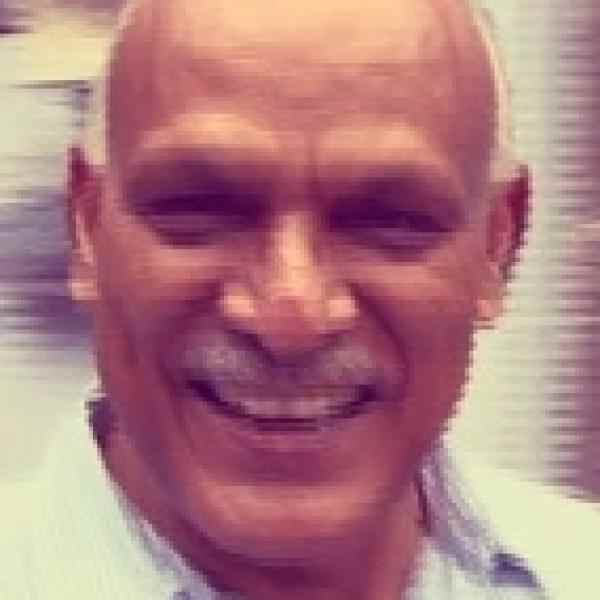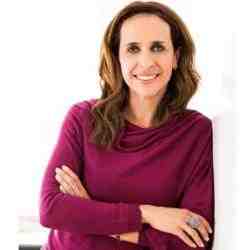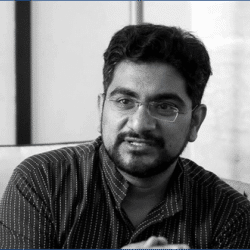Introduction
Pankaj Jain is providing high-quality, low-cost education to children in slums and poor urban areas by re-engineering the role of the teacher. By dividing this role into three parts that require different skill levels, Pankaj has created new job opportunities and increased educational outcomes.
The New Idea
The daily teaching and interactions with students are entrusted to trained and formerly unemployed women with strong interpersonal skills. To ensure quality and consistency in methods, a qualified design team creates the curriculum and provides the teachers with a detailed methodology and schedule. Finally, quality senior teachers support and supervise approximately seven class teachers and act as a link to the design team.
Paraskilling, in which complex processes are disaggregated into simple, routine, and standardized tasks, is the main concept behind Pankaj’s organization, Gyan Shala. However, he also has detailed processes in place to meet his commitment to providing high-quality and affordable education. These systems include complementary teacher teams, a strong emphasis on teaching and learning materials, recurrent teacher training, individual follow-up with students, and optimized staff and infrastructure expenses. Pankaj believes the only way to find an effective, replicable, and short-term solution to teacher and budget shortages is to work within existing resources. By challenging the deep-rooted assumption that quality education is highly correlated to the teacher’s expertise, he found an innovation: with Gyan Shala, he has rethought the role of a teacher by breaking down the tasks.
According to a survey conducted by the MIT Poverty Action Lab, Gyan Shala’s Grade 3 students perform 88 percent better in language and 99 percent better in math than Grade 3 students in municipal schools, despite a slightly lower attendance. Today, more than 30,000 students from Grades 1 to 10 are attending Pankaj’s network of classes, located in poor urban areas all around India.
The Problem
In India, more than ten million school-aged children are excluded from the education system, usually because they come from marginalized communities and underprivileged backgrounds. For those in school, studies have demonstrated that the education they receive is of low quality, especially in primary school. For example, the latest Programme for International Student Assessment (PISA), an international study comparing student performance worldwide, ranks the quality of education in India 63 among 64 surveyed countries. Indeed, the number of students completing their primary education with inadequate numeracy and literacy skills is startling: the Annual Status of Education Report 2011 states that 48.2 percent of students in Grade 5 read at the Grade 2 level.
The explanation for this is twofold. First, only 4.1 percent of India’s GDP is spent on education, as compared to Denmark and Sweden, rated among the top countries in education standards by PISA, which spend 8.5 percent and 7.7 percent. Since schooling is governed by state level laws legislated by approximately 35 governments in different territories, quality standards and investments in education vary.
There is also a national shortage of teachers. With more than 220 million school-aged children, and one class composed of around 40 students, India would need 5 million qualified teachers just to teach math and science (students attend one math class and one science class per day). However, India barely has 2 million teachers. This analysis is confirmed by a 2010 report from the UNESCO Institute for Statistics, which states that India would need 2 million new teachers by 2015. Moreover, teachers are not evenly distributed. Numbers at the national level show that 12.7 percent of primary schools have only one teacher while another 39.1 percent have only two teachers, meaning that more than half of the primary schools in the country have fewer than two teachers. With this ratio of teachers to students, educators are unable to give individual attention to students. Moreover, administrative responsibilities take an additional toll on their teaching abilities.
In addition to facing an inadequate number of educators, there is also a lack of quality teachers. According to the Ministry of Human Resource & Development (MHRD), only 35 percent of government teachers are trained in teaching methodology, while close to 0.8 million remain completely untrained. Also, teachers generally lack the qualification and support to teach multilevel classes. Many initiatives have been put in place to tackle the problem of education quality, both from government bodies and citizen organizations (COs). Some are successful, but very few are able to ensure quality when scaling. Given India’s demographics, scale is a vital success factor for any efficient education model.
The Strategy
Pankaj believes that to improve the problem of education quality in the immediate future, existing financial and human resources must be creatively allocated. His network of classrooms center around a core strategy of paraskilling. After carefully observing a traditional teacher, Pankaj saw that a teacher’s role could largely be divided it into three distinct parts: (a) preparation of curriculum and creating a schedule of teaching (b) daily interaction with students and mastering simple exercises (a majority of the time)and (c) answering questions and complex problems (rare and not urgent). He realized that each part requires a different set of competencies and qualifications and that some tasks could be undertaken by less skilled workers.
To optimize the skills of quality teachers, he set up a “design team” of around 35 education professionals to design curriculums and standardized lesson plans. These plans provide a detailed guide of methods and exercises for communicating a lesson. For example, in Grade 3, the first 20 minutes are dedicated to singing a song, checking the date and neighborhood news, reading a story, or describing a picture. The next 30 minutes are allocated to a language lesson (15 minutes of actual teaching, 15 minutes of individual assignment on the worksheets). This 30-minute pattern is repeated for math. Then there is a 50-minute group activity module: children work in groups and rotate between activities. The last 20 minutes are dedicated to play and fun, as well as homework instructions. Although Gyan Shala curriculums are compliant with the official curriculum from the Ministry of Education, the design team often adapts it by mixing Grade 3 and Grade 5 math exercises, for example, in order to help the students’ progress faster.
Standardized lesson plans coupled with recurrent training enables Gyan Shala to hire trained, local, “unqualified” women for daily interaction with the students and basic communication of lessons. These women typically come from the same community as the students and have completed Grade 12. They are selected on the basis of their communication and interpersonal skills and general comfort with the subject. In addition, every other Saturday is dedicated to training on curriculum updates and teaching skills, while two week-long workshops per year reinforce Gyan Shala’s values.
With the design of curriculum and everyday classes handled by others, the “supervisors,” experienced teachers with a graduate degree, focus on supporting and supervising the network of “community” teachers. Acting as an interface between the design team and the teachers, each supervisor is responsible for around seven classes—visiting each class weekly in rotation, supporting and evaluating the teachers, and answering any complex questions the students may have. They also take care of all the administrative work, such as paying the classrooms rent and handling relationships with parents.
Pankaj uses other processes to improve teaching quality and learning. In elementary school, one teacher teaches all subjects (English, Gujarati, math, and science). In middle school, teachers are specialized by subject and rotate between classes. Between rotations, one supervisor manages the break (so that students do not leave the classroom or get too distracted). Moreover, for each group of four specialized middle school teachers, there is one non-specialized extra teacher who can take over in case of illness; this extra teacher is trained to be up-to-date on all four subjects, and teaches one class every two weeks to maintain her teaching skills. Because the infrastructure is quite basic, Gyan Shala invests a lot to provide teachers and students with good teaching and learning materials, such as individual textbooks and worksheets. As a result, Gyan Shala student’s outperform their government school counterparts in all subjects—on average, Grade 3 students scored 63 versus 31 in language, and 87 versus 40 in math.
To increase impact, Pankaj focuses on maximizing attendance. He ensures that schools are walking distance from students’ homes; classes are only three hours long, so children can focus on their studies as well as helping their parents; and to encourage more girls to attend classes, he appoints only women teachers. When a student is absent more than three times a month, a supervisor will visit the family. To further ensure that education remains affordable, Gyan Shala optimizes the staff salaries while charging reasonable fees to families. Hiring low-skilled teachers to work part-time significantly decreases costs. Moreover, infrastructure costs are kept low by holding classes in rooms of an average size of 15 square meters, rented from a slum family for around INR 3,000 (US$60) a month. Most importantly, fees are accessible (free in elementary school per government rules, and 100 Rps per month per child in middle school). As a result, attendance in Gyan Shala schools varies from 65 to 80 percent. To ensure that families have a financial stake in their child’s education, Gyan Shala charges a nominal monthly fee of INR 100 (US$2) per child in middle school. A child costs Gyan Shala INR 2,800 (US$56) per year in elementary school and 4,000 (US$80) in middle school (inclusive of class rent, learning material, and stationery). This is much more financially competitive than a government school, where the cost of one child can vary from 10,000 (US$200) to 25,000 (US$500) per year, excluding building and stationery expenses and the transport costs incurred by the student.
These processes to ensure quality and affordability lead to a highly scalable solution. Starting with 10 classes in Ahmedabad in 2000, Gyan Shala today provides education to 30,000 students from Grade 1 to 10 in more than 1,000 classes. Gyan Shala’s presence has successfully expanded to other states in India: apart from Ahmedabad, Gyan Shala classes can be found in Kolkata, three cities of Bihar, and two cities in Uttar Pradesh.
Gyan Shala’s model has proven to be so effective that the government of Gujarat approached Pankaj to spread his methods. Pankaj then ran a two-year pilot with a few government schools. After training school teachers and teaching more than 8,000 students, the project was suspended due to a change in the political majority in the government. Pankaj is currently negotiating with government officials to begin again, as partnering with government schools is strategic for Gyan Shala, to gain accreditations, funds, and scale. Pankaj is sure he will be able to intervene again and has thought of several improvements to ensure success.
The Person
Pankaj comes from Uttar Pradesh. After completing his engineering degree at IIT Roorkee, he went to Ahmedabad to work at the Indian Space Research Organization, and then completed his PhD at IIM Ahmedabad. Here he spent time understanding the development sector. Upon graduation, although offered an attractive job at Tata Consultancy Services, he joined the advisory team of Dr. Kurien, who led the White Revolution. Dr. Kurien approached ministers and government officials to change policies to further Amul’s growth, and Pankaj prepared his briefs for meetings. These two and a half years were truly inspiring for Pankaj, who still considers Dr. Kurien his greatest mentor.
After seeing that rural development moved slowly due to a lack of trained professionals in the sector, Pankaj took what he learned from Dr. Kurien and started the Institute of Rural Management Ahmedabad (IRMA). He created the syllabi for and taught courses on strategic management for the rural areas at IRMA, adding specialized faculty members in rural education, rural health, and other sectors. Through his efforts, Pankaj trained a strong cadre of more than 500 students a year who would catalyze rural development. Born out of Pankaj’s insight on rural management and development, IRMA is at the forefront of professionalizing the development of India’s rural sector. Over the years it has provided management training, support, and research facilities to students committed to rural development. This effort has drawn co-operatives, COs, government development agencies, international development organizations, and funding agencies to IRMA.
Since IRMA focused on the cooperative model, Pankaj also introduced new topics, such as the role of COs in rural development. In 1994, he left IRMA to explore new areas and broaden his perspective. This led him to teach abroad in prestigious universities in the UK and US (MIT, NYU, and University of Leeds). Pankaj also consulted for Grameen Bank and the Bangladesh Rural Advancement Committee, advising them on their general management strategies. Later, he became a member of an evaluation committee sponsored by the government of Andhra Pradesh, and he participated in evaluating the education sector and identifying potential improvements.
Going forward, Pankaj’s plan is to enter government schools and influence policy through the Education Ministry to adopt the Gyan Shala model of education, because he believes it is a method for efficient expansion.




